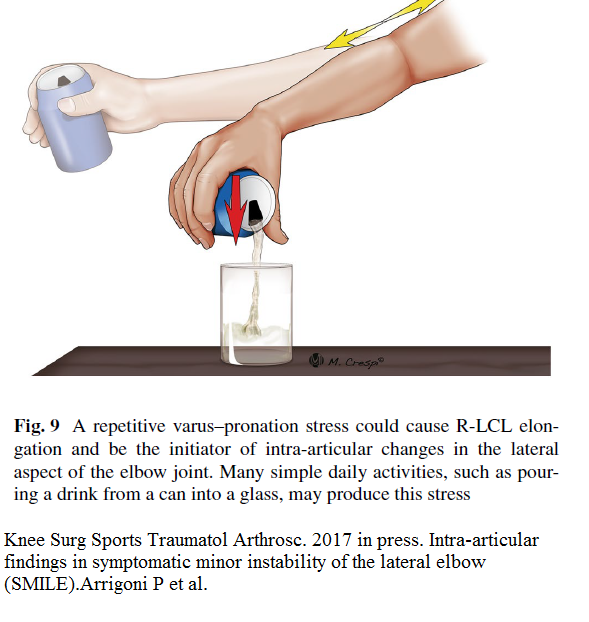Chronic tennis elbow might involve instability in elbow joint. I remember being taught to always inject the radio-humeral joint and I can see why if much of the time pathology exists there. Might explain recurrence rates.
Knee Surg Sports Traumatol Arthrosc. 2017 in press.
doi: 10.1007/s00167-017-4530-x.
Intra-articular findings in symptomatic minor instability of the lateral elbow (SMILE).
Arrigoni P et al.
https://www.ncbi.nlm.nih.gov/pubmed/28341879
- 35 cases between 20 and 60 years
- recalcitrant lateral epicondylitis
- without overt elbow instability
scenario is as follows:
- Certain movements strain elbow joints
- annular ligament elongation and instability radial head
- Impingement radial head – I presume part of what they call radial head ballottement – seen in near 1/2 cases
- Cartilage damage to Capitellum (CLAC lesion)
- Capsular tears
- Extensor Carpi Radialis Brevis dynamic stabilizing overstrain with your tennis elbow
With Elbow arthroscopy they found
- ~ 1/2 recalcitrant lateral epicondylitis have signs of lateral ligamentous instability
- > 85% demonstrate at least one intra-articular abnormality synovitis or capitellar chondropathy
Comment – makes a case for prolotherapy to elbow joint to stabilize condition though they did not mention. They mentioned a lesion called snapping plica syndrome – a band in joint that snaps – I have that condition which can be annoying but seems to settle with use in gym.


Pingback: Resistant Tennis Elbow – Open Release or Radiofrequency Microtenotomy – and More | Pain Medical Musing